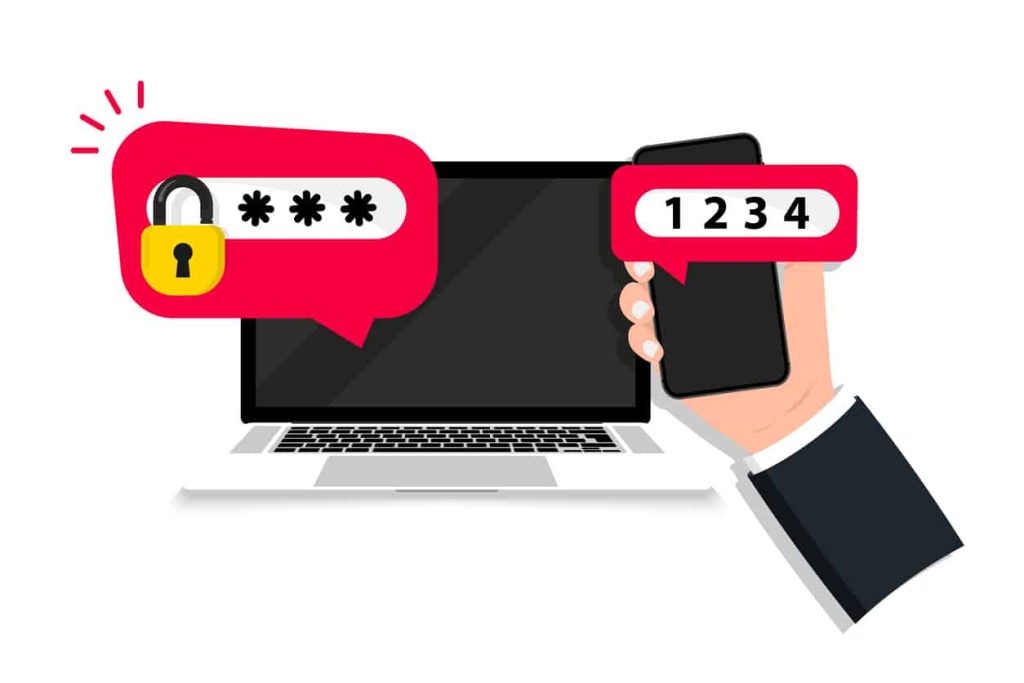Passwords, no matter how strong, can be cracked. But Two-Factor Authentication (2FA) provides an additional layer of security for your employees.
Even a strong password can be cracked by cybercriminals. However, most people don’t even use “strong” passwords. Worse yet, people tend to use the same passwords across a range of accounts and services. When you do that, a breach of one account could mean a widespread attack on everything you’re connected to. Imagine it as a little snowball rolling down a hill, ultimately growing into a huge, dangerous boulder.
According to an online security survey from Google and Harris Poll, 52% of respondents reuse the same password for multiple accounts, while 13% reuse the same password for all of their accounts. Despite hacks and major password leaks happening time and time again, not everyone takes password etiquette seriously. That’s why turning on two-factor authentication (2FA) is a must.

What Is 2FA?
Referred to as 2FA, two-factor authentication (or multi-factor authentication) is a secure login process that requires an additional identification level before providing access to an account or service. To log in, you must enter a second code after providing your account and password details.
The code is sent through a connected email address to a phone number via text, or it’s accessible through an authentication app, like Google Authenticator. Without the code, you cannot get in even if you enter the correct username and password. This type of authentication has been around for a long time, and you’ve likely used it many times yourself. ATM and debit cards, for example, require you to enter a personal PIN after swiping the card.
There are other sources of authentication, including using a hardware key or token, biometrics like a fingerprint or iris scan, or knowledge-based keys like personal pins or the answer to a specific question.
Enterprise vs. Consumer 2FA
Understandably, the authentication measures a business or commercial entity utilises are going to differ from something your average consumer does. The scale of a commercial system must be significantly larger, as it needs to manage and provide service for a vast group of users. One of the best multi-factor providers on the market right now is Duo, a subsidiary of Cisco. It delivers secure, multi-factor access for a community of users, on any device, in nearly any environment, and at any time. It’s designed to be natively integrated with existing apps and services, making it easier to transition personnel to the 2FA platform.
Why Choose Duo?

Originally developed in the 1980s and early 1990s by Security Dynamics Technologies, traditional two-factor solutions were meant for client-server setups. This aged technology has various points of failure, and the requirements of operating it come with many costs—from hardware to maintenance.
Duo combats these problems while improving security by maintaining a lightweight profile. It saves costs by providing security-backed SSO without a device agent handling remote access. The service supports rapid deployment, authentication across a range of devices (as opposed to just mobile), and integration with every service you might need—like Citrix, Array, Sonicwall, Cisco, Juniper, and more. System and security managers can check the health of all managed and unmanaged devices from within the service as well.
The platform is always accessible to end-users, and it’s a breeze to log in to connected accounts and services. Unless you want to manage a two-factor solution in-house, there’s no reason to pass up on using Duo. The entire solution is managed by the Duo team, decreasing the burdens on your teams, IT staff, and the entire business.
For more information on Duo and how we implement it at SMB Solutions, get in touch with one of our team members today.

